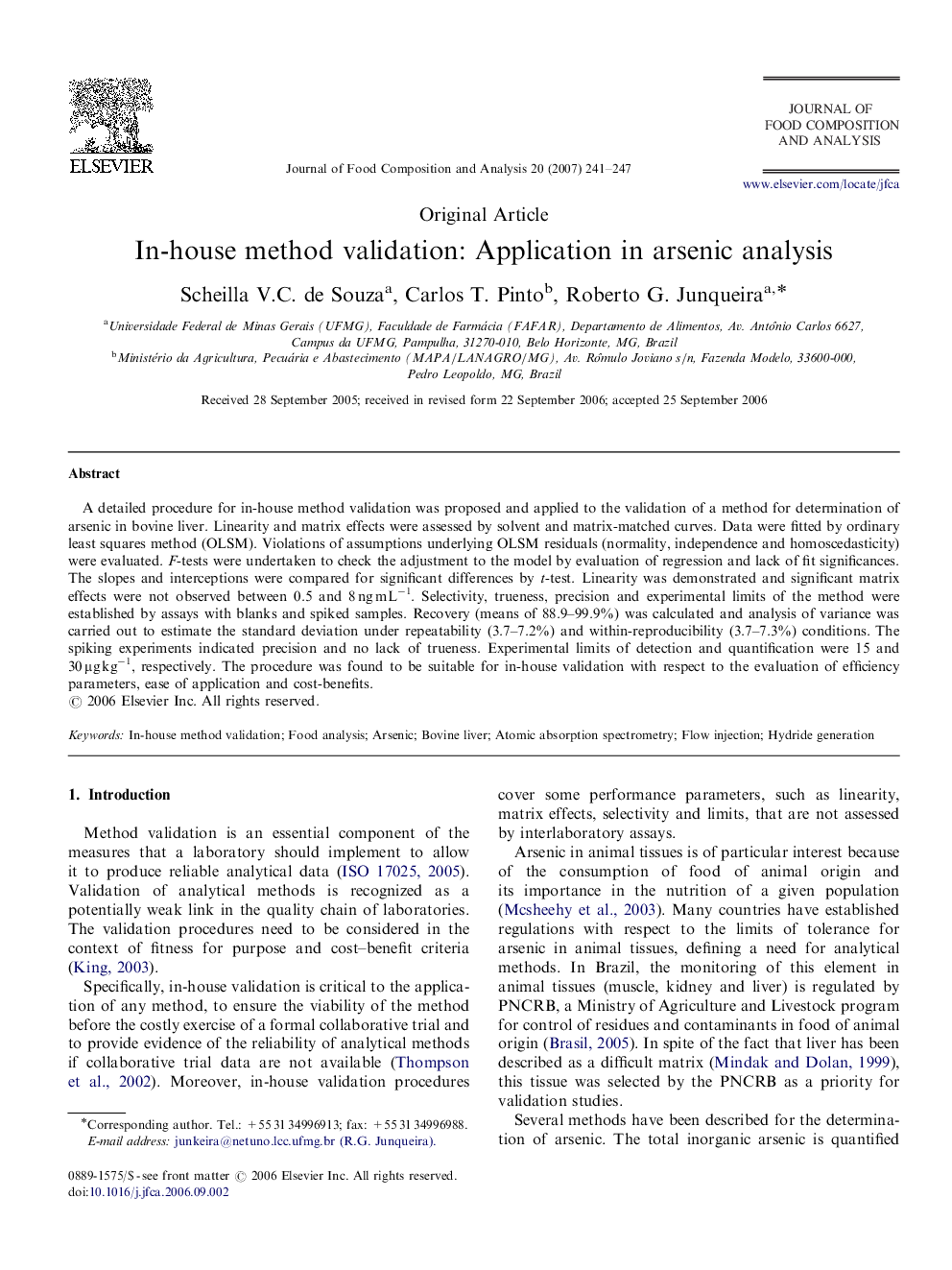| Article ID | Journal | Published Year | Pages | File Type |
|---|---|---|---|---|
| 1219203 | Journal of Food Composition and Analysis | 2007 | 7 Pages |
A detailed procedure for in-house method validation was proposed and applied to the validation of a method for determination of arsenic in bovine liver. Linearity and matrix effects were assessed by solvent and matrix-matched curves. Data were fitted by ordinary least squares method (OLSM). Violations of assumptions underlying OLSM residuals (normality, independence and homoscedasticity) were evaluated. F-tests were undertaken to check the adjustment to the model by evaluation of regression and lack of fit significances. The slopes and interceptions were compared for significant differences by t-test. Linearity was demonstrated and significant matrix effects were not observed between 0.5 and 8 ng mL−1. Selectivity, trueness, precision and experimental limits of the method were established by assays with blanks and spiked samples. Recovery (means of 88.9–99.9%) was calculated and analysis of variance was carried out to estimate the standard deviation under repeatability (3.7–7.2%) and within-reproducibility (3.7–7.3%) conditions. The spiking experiments indicated precision and no lack of trueness. Experimental limits of detection and quantification were 15 and 30 μg kg−1, respectively. The procedure was found to be suitable for in-house validation with respect to the evaluation of efficiency parameters, ease of application and cost-benefits.
